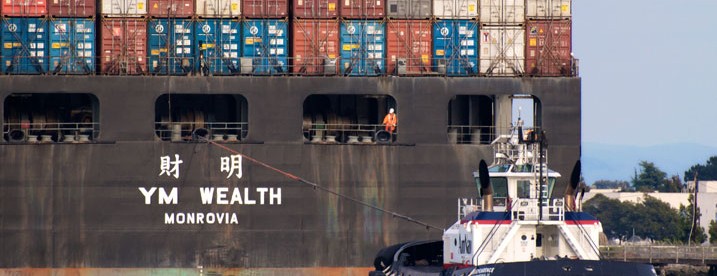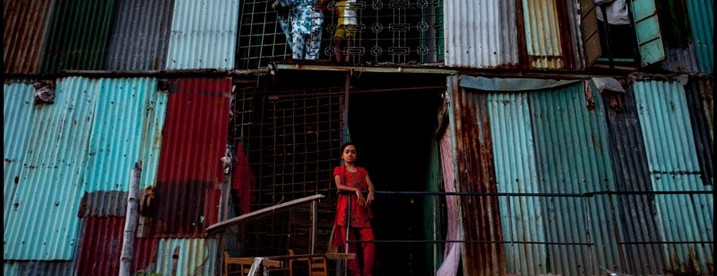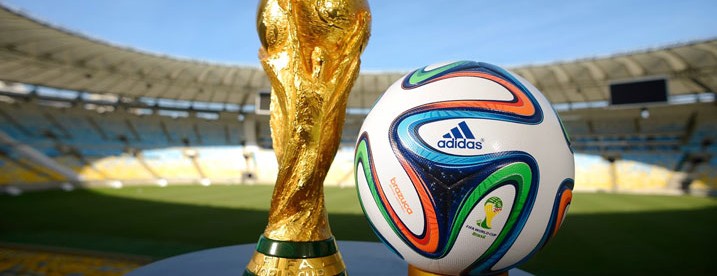By Tom Cardamone, February 1, 2016
In adopting the Sustainable Development Goals this past September, UN member states realized two extraordinary achievements. First, the document itself—with 17 goals, 169 targets and 200+ (yet to be finalized) indicators—is a testament to global ambition, a 15-year roadmap toward what is hoped will be unprecedented progress in poverty alleviation. Second, the global community agreed to “substantially reduce illicit financial flows,” which reached $1.1 trillion two years earlier according to a recent GFI study.
By Heather Lowe, July 22, 2015

Law Firm Focuses Attention on Practice Illicitly Draining Over US$700 Billion per Year from Developing and Emerging Economies
While much of GFI’s focus is on improving the capacities of customs departments, it is unfortunately rare for us to find American law firms writing articles on customs issues applicable to our work. Attorneys at the global law firm of White & Case have recently published one worth reading, however.
The authors are noting the increase of U.S. enforcement in the customs area, and most of the cases cited involve trade misinvoicing/fraud, a practice which accounts for about 80 percent of GFI’s illicit financial flows estimates—illegally draining US$730 billion from developing and emerging economies in 2012.
By Tom Cardamone, June 4, 2015

Illicit Financial Flows Have a Devastating Impact on the Poorest Countries in the World
What do you do when “the big number,” used to estimate the global volume of illicit financial flows (IFFs), begins to lose its luster?
Over the past year or so, GFI has begun to hear—in various venues and by various people—the warning to audiences that they shouldn’t “focus on the big number.” A trillion dollars is a global number, these observers say, and can’t be used to assess the impact at the country level. Or, they contend, the trillion dollars in IFFs is from a cluster of emerging market countries and therefore is skewed to make it look as though all developing countries have huge problems when really only a few do. GFI decided to go back to the data to see if the criticisms were accurate.
As a result, this week we are publishing “Illicit Financial Flows and Development Indices: 2008–2012,” a study that looks at illicit flows from the poorest countries to determine the development impact in those places that do not appear on the top-10 list of IFF-source nations by gross volume. Rather than focus on the Chinas and Russias and Mexicos of the world, we examined IFFs in nations that appear, for example, on the Least Developed Countries list or the Highly Indebted Poor Countries list—82 countries in all were examined. What we found was simply alarming.
By Heather Lowe, May 29, 2015

This was a very exciting week for lawyers who are sports enthusiasts – the Department of Justice indicted fourteen FIFA officials, alleging that they are part of what one could conclude from reading the indictment is a massive, multifaceted, bribery ring. Informal allegations have been made before, and the whispers that FIFA is synonymous with bribery and corruption have been growing louder over the years. But this week the Department of Justice shouted it from the mountain top (or, perhaps more accurately, in front of a lot of the international press corps, which was probably more effective).
There are a number of interesting facets to the case that is now before us. The first is that for a case about bribery, a charge of bribery seems to be conspicuously absent. The Defendants were indicted for a “pattern of racketeering activity,” including charges of violating the Travel Act in aid of racketeering, money laundering, money laundering conspiracy, wire fraud, wire fraud conspiracy, and other charges that do not expressly include bribery. Why is that?
By Tom Cardamone, March 18, 2015

The “Zero Draft” of the Financing for Development Conference Outcome Document Should be Improved to Aim to Halve Illicit Flows from Trade Misinvoicing
On Monday, the United Nations released a so-called “Zero Draft” of the Financing for Development (FfD) Conference Outcome Document. Simply stated, this draft lays out the current political consensus on a vast array of development issues including how to address the growing problem of illicit financial flows (IFFs). It is by no means the final word on IFFs—or any other issue for that matter—but it gives a good indication where things are heading.
The draft proposes three specific steps to address IFFs, including:
- Developing “a proposal for an official definition of IFFs”,
- Developing “a proposal to publish official estimates [of IFF] volumes and breakdown,” and
- An international effort to “substantially reduce” the flow of IFFs.
These measures go a long way toward addressing a problem that has captured the attention of the development community over the last few years. For example, in 2013 the World Bank noted that “there is little doubt” that IFFs have a caustic effect on development, and last year the African Union noted that “it is imperative to curtail” illicit flows.
By Joseph Spanjers, January 20, 2015

As a Percent of GDP, Sub-Saharan Africa Suffers the Largest Illicit Outflows of Any Region in the World
Global Financial Integrity’s (GFI) latest annual report on illicit financial flows–released just last month–estimates the volume of illicit financial outflows from the developing world from 2003 to 2012. It is the first report to estimate these flows for 2012, when they reached a record US$991.2 billion.
Already, this US$991.2 billion figure is being cited quite a bit; it is the main figure cited in many of the articles of we’ve seen on the report in the media. Take, for example, this story in The Guardian, this article from Reuters, or this piece in The Wall Street Journal. It’s the big, flashy, almost-trillion dollar number.
However, I’d like to draw your attention to a different figure, one that emphasizes even more clearly the implications of illicit financial flows on development: 5.5.
By Joseph Spanjers, November 21, 2014

Mexico and Bangladesh Voice Support for a Clear Target on Curbing Illicit Financial Flows on the Sustainable Development Agenda
The United Nations is in the process of forming the post-2015 development agenda. These proposed Sustainable Development Goals (SDGs) will eventually replace the Millennium Development Goals (MDGs) that were agreed upon for 2000-2015. As with the MDGs, the SDGs will inform which development issues take priority in the coming years.
Sustainable Development Goal 16.4, as is currently proposed by the UN’s Open Working Group, calls on the international community to:
“by 2030 reduce illicit financial and arms flows, strengthen recovery and return of stolen assets, and combat all forms of organized crime.”
Global Financial Integrity (GFI) applauds the Open Working Group for considering illicit financial flows in its proposal. Though Goal 16.4 is definitely a start in the right direction, it is not exclusively focused on illicit financial flows, nor is it measurable in the least. GFI proposes the following as an alternative:
“by 2030, reduce illicit financial flows related to trade misinvoicing by 50%.”
By Tom Cardamone, September 30, 2014

GFI Calls for a Sustainable Development Goal (SDG) to Halve Illicit Flows from Trade Misinvoicing by 2030
As I noted in yesterday’s post, the momentum toward global action on illicit flows by the international community (i.e. the United Nations, OECD, G20, etc) has grown substantially over the past three years. Indeed, last October, the World Bank Group noted that “there is little doubt that [illicit] flows have a pernicious impact on development” and the UN group working on development financing said that “domestic resource mobilization is being severely undermined by illicit financial flows.” And, in January, the African Union stated that “it is imperative to curtail illicit financial flows [to ensure] the efficient and effective use of resources.”
But, while there is an understanding of the problem and a willingness to act, there is no broad consensus on what should be done. The opportunity that presents itself comes from a once-in-a-generation confluence:
- the international community agreeing on the need to reduce illicit financial flows (IFFs), and
- 2) the fact that the Post-2015 development agenda is open for debate.
The political will already exists to address the IFF challenge in concrete ways. Now, the question is: what does a SMART (i.e. Specific, Measurable, Achievable, Relevant, Time-bound) SDG target on illicit flows look like?







